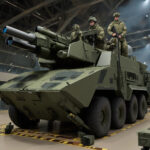In an era marked by rapid technological advancements, OpenAI is setting its sights on the semiconductor manufacturing sector—a move that could reshape the landscape of AI chip production. Recently, CEO Sam Altman proposed an ambitious initiative that entails investing an astonishing $7 trillion to construct 36 new wafer fabrication plants (fabs) and data centers. This plan is designed to meet the surging demand for AI capabilities, backed in part by financing support from the United Arab Emirates.
The financial implications of Altman’s vision are staggering. To put this into perspective, the proposed investment is equivalent to a quarter of the annual output of the US economy. However, establishing these fabs will not be a swift process. The timeline for set-up stretches over several years, reflective of the complexities and pace required to fulfill OpenAI’s burgeoning computing power needs.
Historically, building a wafer fabrication plant has proven to be an exorbitantly costly endeavor. Current estimates suggest that a single fab can command hundreds of billions of dollars in expenses. The costs associated with land acquisition, construction, state-of-the-art equipment, and ongoing operational overhead can add up quickly. For example, Intel’s factories in Arizona are projected to cost around $15 billion each, while Samsung is investing approximately $25 billion into its fab in Texas.
Yet, it’s essential to note that costs aren’t uniform across the globe. Regions such as Asia, known for established supply chains and skilled labor pools, tend to see lower construction expenses compared to locations in Europe or the US. In these areas, costs may escalate further due to the need for imported technology and the lack of a robust local supply chain. For companies like OpenAI, which is aiming to embed itself into the intricacies of semiconductor production, understanding these financial nuances will play a pivotal role in the success or failure of its sweat-equity investments.
OpenAI’s strategic discussions with major chip manufacturers, including industry giants like TSMC and Samsung, underscore the gravity of its ambitions. While TSMC was initially approached for collaboration, the company characterized the proposal as overly ambitious and fraught with risks. It emphasized that even a few additional wafer fabs would require significant capital investment and entail increased risk.
From a technological standpoint, proficient chip manufacturing necessitates a breadth of expertise and infrastructure. Sophisticated lithography machines, which are critical for creating integrated circuits, are not only expensive but also require specialized training and ongoing maintenance. The complexity of these fabs extends beyond physical infrastructure; successful operations depend on a steady flow of innovation in production methods and talent acquisition.
Moreover, the landscape of AI chip production is rapidly evolving. As companies across various sectors look to integrate AI solutions into their operations, the competition for innovation in chip technology is intensifying. OpenAI’s approach to securing its position within this competitive arena appears to be a strategic gamble to fortify its future capabilities.
The proposed construction of additional fabs aims to anticipate this growing demand, positioning OpenAI as a central player in the AI ecosystem. However, the path forward is littered with challenges, including capital allocation, resource management, and navigating geopolitical factors that affect technology sourcing and workforce mobility.
In conclusion, while OpenAI’s vision to enter the semiconductor manufacturing sector is ambitious, it signifies a crucial step toward addressing the escalating demand for AI capabilities. As the company moves forward, it embodies the substantial investments needed to establish a foothold in this critical industry—an endeavor that could hold the key to unlocking future innovations. The success of this initiative will not only depend on financial prowess but also on OpenAI’s ability to navigate the intricate dynamics of the semiconductor market.












